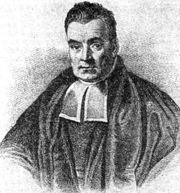
![]() It's a straight forward yet comprehensive spam filter for Outlook combining Bayesian filtering with smart white lists and works with all accounts...
It's a straight forward yet comprehensive spam filter for Outlook combining Bayesian filtering with smart white lists and works with all accounts...
Heinz Tschabitscher, email.about.com
![]() I'm very pleased with Spam Reader - it does a better job than built-in Outlook junk mail filter. I receive much spam and your product is a big help for me.
I'm very pleased with Spam Reader - it does a better job than built-in Outlook junk mail filter. I receive much spam and your product is a big help for me.
David Solomon, www.solsem.com
Spam Reader works great and I love it. The Safe Recipients List is a nice feature, it's solved the problem that I have with receiving messages from my numerous mailing lists.
Hugo Foulks
 The main problem for anti-spam software is the correct spam recognition.
Various techniques were developed and tried. But spammers quickly make them obsolete using even newer tricks.
Fortunately, Reverend Tom Bayes, who lived in the 18th century, derived a formula for re-estimating the likelihood of a
certain event in an experiment based on the results of this experiment. In the other words, suppose you are making
some experiment in a "black box" and you cannot observe what is happening inside but you need to know some information about this.
Given the results of the experiment you can use the Bayes formula to estimate the probabilities of some events happening inside
the black box.
The main problem for anti-spam software is the correct spam recognition.
Various techniques were developed and tried. But spammers quickly make them obsolete using even newer tricks.
Fortunately, Reverend Tom Bayes, who lived in the 18th century, derived a formula for re-estimating the likelihood of a
certain event in an experiment based on the results of this experiment. In the other words, suppose you are making
some experiment in a "black box" and you cannot observe what is happening inside but you need to know some information about this.
Given the results of the experiment you can use the Bayes formula to estimate the probabilities of some events happening inside
the black box.
To realize the Bayesian approach it is necessary to have an initial message database that contains both spam and non-spam messages
(approximately equally). The base is used for learning the spam filter: for every word appearing in those messages the number of
entries in spam messages and in non-spam ones is counted. This number helps to estimate how often the word appears in spam and
non-spam and to calculate the corresponding probability. As a result, for both parts of the message database there are lists that
contain the used words with corresponding probabilities.
The lists are used to estimate the probability that a new message is spam. When a new message is received the spam filter divides
it into words and finds the words in both lists. Using the probabilities for single words from the lists and applying the Bayes
formula the program estimates the probability for the whole message to be either spam or non-spam.
Obviously, the effectiveness of spam filtering depends very much on the message database used for learning. So, to make filtering the most effective for a particular user it is necessary that the spam filter could learn on the message database of this user and automatically make adjustments when filtering is incorrect. Both this options are realized in Spam Reader and result in the following advantages:
The inventor and the main promoter of the idea to use the Bayesian approach in spam filtering software is Paul Graham, an American essayist,
programmer, and programming language designer. In 2002 he described a simple spam filter that used the Bayesian approach to estimate whether
a piece of e-mail contains spam. Since then this approach has become very popular and inspired most current spam filters that use it as
a part of the spam detection algorithm.
See also: Spam Filter for Outlook | Exchange Anti-Spam
| Outlook Junk Mail Rules
| Outlook 2019 Spam Settings
| Junk Email Filter Outlook 2019
| Spam Blocker for Outlook
| Anti Spam for Outlook 2021